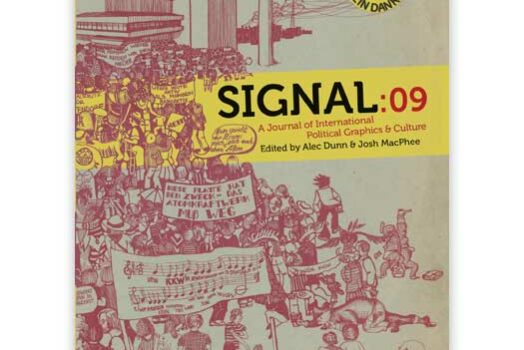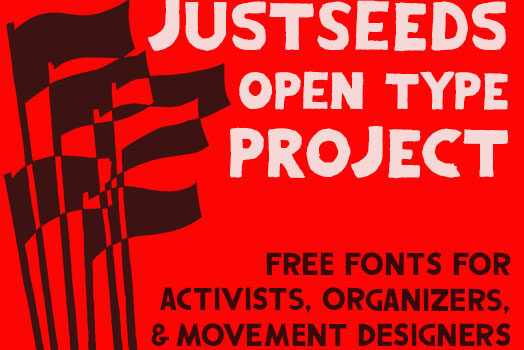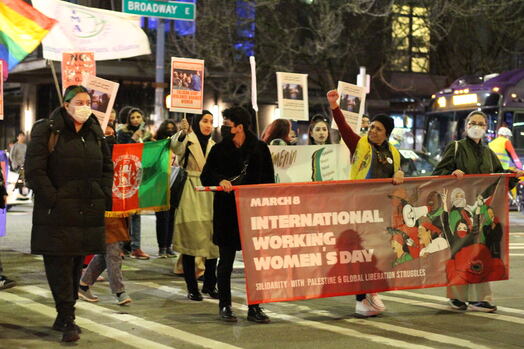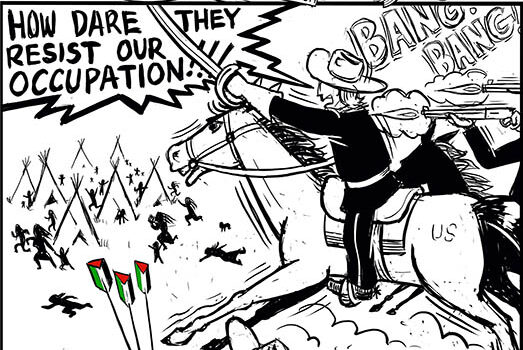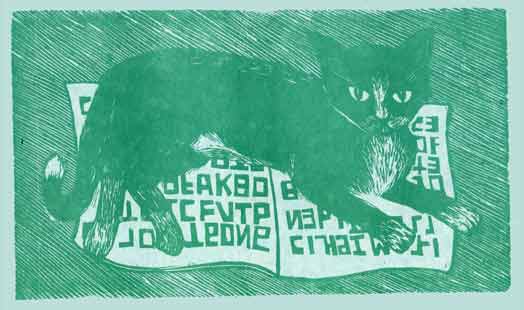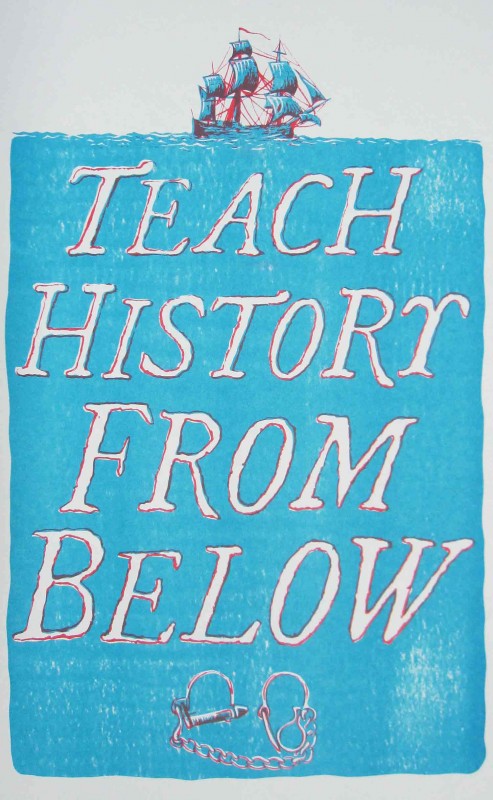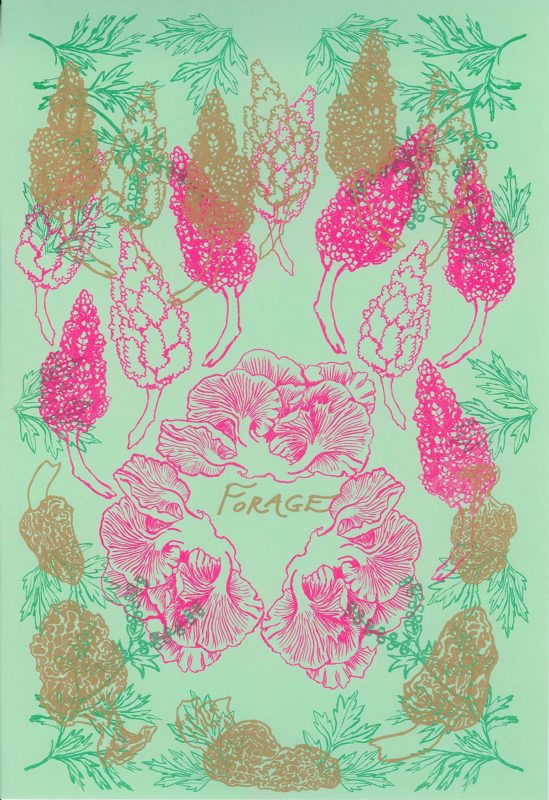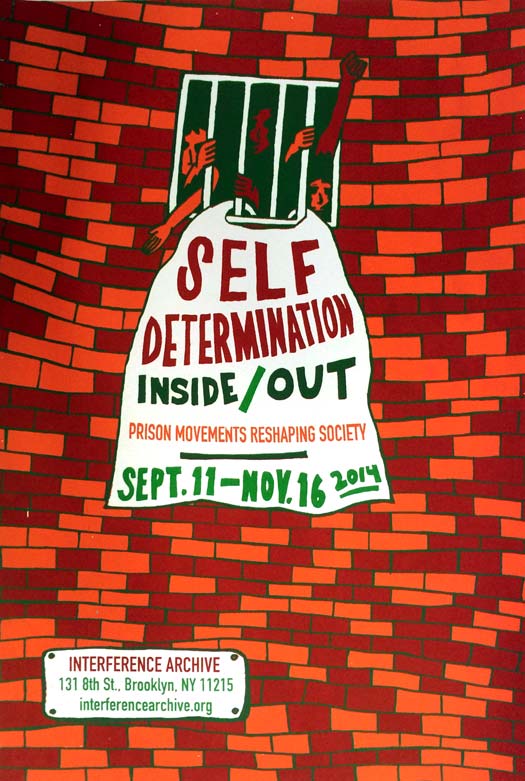We got this design in the mailbox from Scott Boylston, a great graphic designer from Savannah, GA we’d worked with before on the No RNC Poster Project, along with a statement:
Third Colossuss (or Mother of all Exiled)
The phrase, “Give me your poor, your tired, your huddled masses yearning to breathe free,” is from a poem called “New Colossus” by Emma Lazarus, and it is inscribed on the Statue of Liberty. The first two lines of the poem read “Not like the brazen giant of Greek fame/With conquering limbs astride from land to land.”
This poster represents the third Colossus. It is the victim of our very own “New Colossus.” The image represents the ravages of tyranny when ideals of goodness have been twisted by blind self-righteousness. We have come full circle — from the brazen giant, to the mighty woman, then back to the brazen giant with nothing but its victim to stand in testament.
Lawyers for the Bush administration have suggested that the US does not have to follow the Geneva Convention when dealing with captured Iraqis. Prisoners can be held indefinitely, without the opportunity to speak to anyone, and without ever knowing why they have been detained.
So we sent some questions over to Scott, and here’s what he had to say…
1. Where are you from? Where do you live now? How have these places impacted you as a person and as an artist?
I was born in Manhattan, raised in Queens until about 5, then moved to upstate New York–along the Mohawk River in the foothills of the Adirondack Mountains. I came back to New York City for grad school and worked there for over 10 years, then moved to Savannah, GA which is where I presently live.
For one thing, place has always provided me with answers to my questions, or at least teasing glimpses into those answers. New York has answers for everything, of course, but it can be somewhat stingy with the ones you’re actually looking for. Answers are answers, however, and if you’re prone to be happy with answers for questions you never thought to ask, then New York is great. It’s the belly button of my conscience. No matter where I go I feel tethered to the place in an elemental way, as if an umbilical cord were still connecting us. Savannah is very different, of course, but it’s a great town with a strong soul. It’s diverse for it’s size, and it’s got good positive energy. Savannah and New York are like complimentary colors; they are each more alive when juxtaposed against one another.
2. What’s the process that goes into making one of your pieces?
Speaking strictly of poster design, the process is usually identifying the core conflict within an issue, then identifying the iconography of that conflict. Symbols and metaphors are the designer’s most powerful tools, but only if used in a way that avoids the hackneyed (or exploits the hackneyed in an unexpected way). The creative process is a lot like the personal process of determining an ethical stance. To feel from the heart is one thing, but it’s important to try to identify where that gut feeling is coming from; is it pure and objective? Or has it been twisted in someway that is still hidden from your own sensibilities? Digging for the core conflicts—-the core concepts, really, with conflicts being a key part of those concepts–and sparing nothing to identify them, is the first step in my process. Then, determining a way to juxtapose these metaphors in a jarring way to reframe and rephrase an argument so that those who are exposed to it rely less on their personal prejudices when attempting to affirm the validity of their side in that argument. In terms of selecting media, it’s simply making sure that the medium does not interfere with the delivery of the key concepts. Sounds simple, but rarely is. Medium comes last.
3. Who do you see as your audience? How do you go about getting your work out to people?
Again, speaking strictly of poster design, I’d say that for the most part I want to speak to an audience I respect; an audience with values I respect. I’m not usually interested in presenting a mediated stance with my posters. Posters are so public—they catch people unaware and by the sheer force of this surprise they have the potential to shift people’s perspectives. But achieving a major shift in the viewer’s attitude is a daunting task, and one that often backfires or fails in unforeseen ways. So, speaking with like minded people—or those who aren’t dead set in their mentality—are those I have in mind. In my other creative pursuits you could say I aim for some form of moderation, but the poster is the designer’s purest art, and I don’t feel the need or desire to moderate my expression in any way.
Having said that, the free-speech poster project a group of us did for the national conventions and the G8 protests was aiming specifically to find common ground between America’s polarized ideologies by highlighting non-violent protest as something all Americans should embrace—eagerly and steadfastly. The non-violent part is appreciated by the majority of both sides, but the more important part is the protest part—the public display of a dissenting voice. At times public dissent is a citizen’s only tool, and it can be a powerful tool as long as it is not successfully demonized by the state or the status quo. By successfully, I mean at a point where a good part of the population somehow buys into the notion that protestors are unpatriotic. Unfortunately, that’s what we’ve seen lately, and it makes it that much more important to engage in dissent. Engage in it as often as possible. But it makes it equally important to engage in non-violence.
In terms of getting the work out, life is great if only for the beautiful web of like-minded individuals you come to meet and converse with in the course of a lifetime. I’ve come to know people I respect who are also engaged in activism of one kind or another. We try to stay connected, and sometimes we work together for different causes. Also, the more I study international poster design, the more I realize that even the most highly acclaimed poster designers fund the printing of their own work in situations where they feel the need for such action as necessary to get the message out. I’m just starting to do that myself. As citizens we can donate in so many ways. We can be dues-paying members of social and environmental groups, we can donate our private time to help in soup kitchens and various grass-roots organizing. But as designers, we have that wonderful extra talent we can donate. Doing the design is one thing—and sometimes enough in its own right—but donating the printing costs is yet another. It’s a matter of determining the best method of donating your resources, and how much you can give. Progressive minded lawyers offer a full array of law services to their causes, why shouldn’t designers?
4. When did you decide to merge your political views and your art? What was the catalyst for this change?
I don’t know if it ever was a conscious decision. Art for art’s sake, in other words, was not the catalyst for any of my creativity. Personal expression regarding human concerns was of more interest, and that expression just happened to take the form of writing and designing. In terms of overtly political art, you could say that the year 2000 triggered something in me. Before that I was content to say my piece—and do it in a nuanced, maybe even contradictory fashion—consciously leaving the door open to a critique of my own shortcomings as a way of acknowledging the subjective nature of our existence. In my fiction, especially, I was content in creating non-political narratives with broader social defects serving only as deep, sometimes even intractable, undertones.
The environment was my biggest worry when Bush first came to office, and the fact that we can’t even have a dialogue concerning the environment anymore is upsetting. It’s as if that topic is completely off the table now with our minds on a new bag of worries. So, his election was a first big step towards overt and unapologetic political expression. With the build up to war, I was compelled to react more aggressively. Like so many people now, I worry about this country’s future. The way I see it, we can engage in some good-old fashion non-violent protest now, or we can sit back and wait until protest is not only demonized, but truly threatened to the point of extinction by those who see it as nothing more than a threat to their rise to tyrannical rule. I truly believe our actions now can play a part in preventing any serious imbalances from occurring in the coming future. They say the political pendulum swings back and forth, but that’s assuming the balancing influence of gravity is not fundamentally changed in some way. Systems have a way of suddenly shifting dramatically within the presence of counterbalances. It’s incumbent on the left to provide that counterbalance.
5. How do you balance being a professional designer and teacher with your more political work?
It’s pretty straightforward. As much as many people bemoan the monoculture of America, we’re still a pretty diverse nation. And let’s face it, even the most ideologically fanatic person possesses a certain degree of complexity. As a professor, I get a lot of opportunities to let young designers know that there is a realm beyond consumer culture for them to explore. As designers we can act as responsible contributors to society, even as we make a living. These two things are not diametrically opposed, as some believe. It’s true, too, that even bland commercial work is a political statement in support of the non-sustainable quo. So, as young designers realize this, they’re more open to exploring other forms of expression.
It can be hard when dealing with students who hold strong ideological viewpoints that vary from mine, but not really. I’ll always stress that EVERYONE must be objective and educated in their stance. Only after intensive research into the mindset and rationales of the “enemy camp” can a designer ever assume the role of a responsible communicator. My classes are always open to diverse opinions, and in a way that reveals the promise of diversity within a society, because my most fruitful classes are usually those that have a healthy dose of divergent political and cultural opinion. That provides a catalyst for deeper thought, and a deeper understanding of what it means to exist within a diverse culture as a culture agent.
6. What’s next?
Who knows. At the very least, four more years of relentless image making. I’ve got a book that will be out in the next few months as a part of a fellowship grant. It’s a mix of poetry and design, and focuses on issues of global environmental degradation. I’ll send one along once it’s published.




